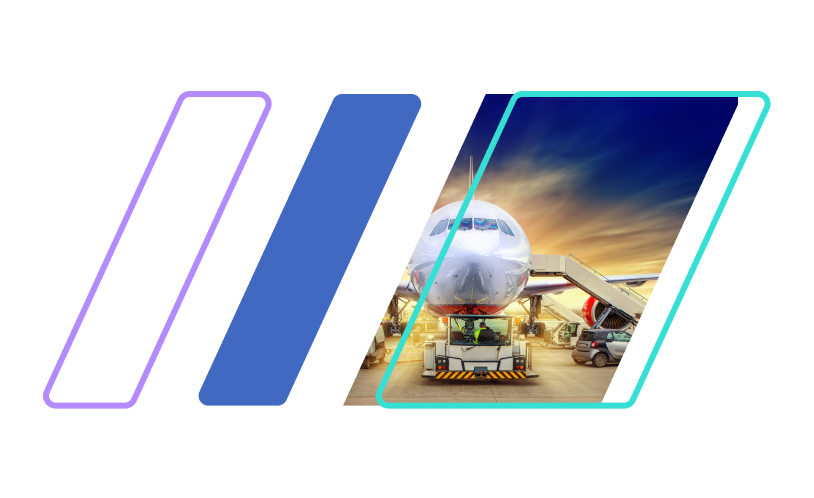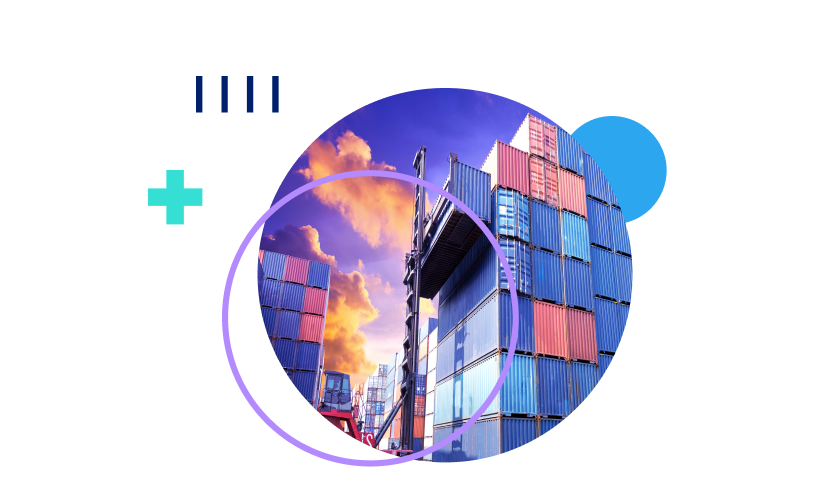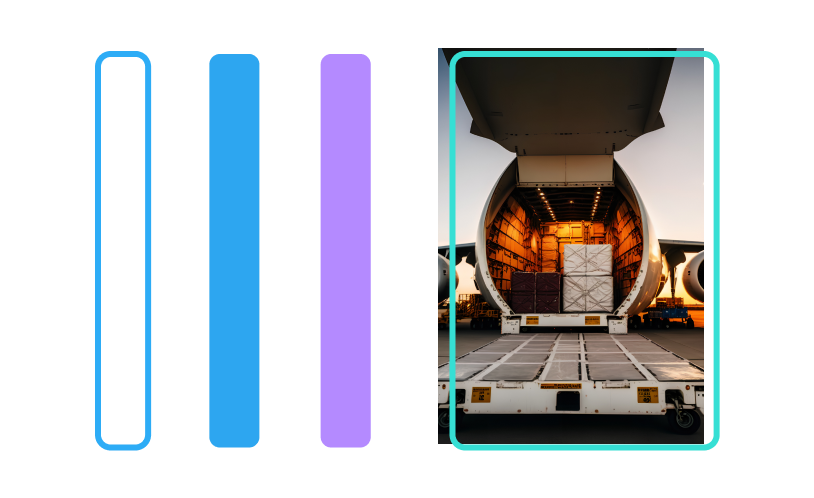What is Air Freight Procurement?
Air freight procurement might not sound glamorous but it’s the quiet powerhouse keeping supply chains running smoothly. At its core, air freight procurement is about securing the right capacity for the best price at the right time, often with razor-thin margins and tight deadlines…and then managing the shipment.
But air freight procurement isn’t just about cutting costs (though that’s always nice).
Procurement teams are focused on the bigger picture: They’re constantly analyzing market trends, staying ahead of capacity crunches, and finding ways to mitigate challenges and make air freight procurement not just a service, but a seamless experience from A-Z – all while balancing cost, compliance, and customer expectations.
And when it works? Nobody notices. That’s the point.
But it comes with challenges.
Challenges in Air Freight Procurement
Air freight procurement is a high-stakes game where a single Black Swan can ripple across the entire supply chain. Here’s a quick snapshot of the main Black Swans affecting air freight procurement:
- Fuel Price Volatility: Jet fuel prices can fluctuate wildly, with airlines quickly adjusting fuel surcharges to match. For procurement teams, this isn’t just a budgeting challenge – it’s a strategic one.
- Capacity Crunches: Peak Season or other demand surges due to geopolitical events, can create a perfect storm of limited air freight capacity and skyrocketing rates.
- Regulatory Compliance: International shipping means navigating a web of regulations, from customs documentation to rules around hazardous materials. A missed form or non-compliant package can lead to costly delays, including shipments being held indefinitely.
- Unforeseen Disruptions: Other unexpected delays often include global disruptions, such as port groundstaff strikes, lane closures, geopolitical issues, or environmental impacts.
…nearly all of which will affect the most critical part of the air cargo procurement and pricing process: Freight rate management.
This ever-shifting landscape means a typical door-to-door quote can involve managing and reconciling 10 to 20 different fees and surcharges, each with its own set of variables. That makes visibility across all rates more critical than ever, but rate management across contracts, promo, and dynamic rates becomes more challenging as pricing tech evolves.
And that’s where best practices for air freight procurement come in.
Best Practices for Air Freight Procurement Strategy
Broadly speaking, best practices in air freight procurement boil down:
- Combining live market rates…
- with dynamic pricing from carriers
- and together with pre-negotiated rates.
This lets forwarders scrap the endless spreadsheets and email chains and replace them with a quick, seamless search.
The right systems handle the heavy lifting by automatically factoring in all surcharges and fees, bundling everything into polished, branded quotes. From there, the customer just clicks “book,” and it’s done. By adopting digital tools and strategies, forwarders have unlocked unparalleled agility, visibility, and profitability – achieving an impressive 12-15x ROI in the process.
Leveraging Technology in Air Freight Procurement
Best-in-class tools provide visibility, actionable intelligence, and make generating, customizing, and sending quotes effortless.
By leveraging end-to-end digital rate and Booking solutions, forwarders can share managed access for self-serve rate searches with agents and customers, handle real-time bookings for multiple rate types, and even let customers book directly. The magic lies in combining visibility with actionability.
This matters when you’re buying the right tooling. If you’re gearing up for your next freight rate management RFP, here’s a cheat sheet of features you won’t want to miss:
- Comprehensive buy and sell rate management
- Real-time data pulls for dynamic rates
- Integrated analytics and market intelligence
- Automated, rule-based quote generation
- Dynamic, true-to-market pricing
- Managed access for agents and customers
- Multilingual capabilities
- Expert support and best practices consultation
- Seamless integration with booking platforms
Combined with Best Practices
Tools and technology are only half of the equation, though. To really stay ahead, forwarders need a sharp procurement strategy – using data in meaningful ways, building stronger partnerships, and keeping up with what customers and regulators expect. So, let’s dive into some key best practices that can help forwarders lead the pack in 2025:
1. Sustainability as a Core Strategy
Sustainability isn’t just a buzzword anymore – it’s the backbone of smart procurement. According to the 2024 CDP Supply Chain Report, 65% of companies now put sustainability front and center. This isn’t about looking good on paper; it’s about making real, measurable impact.
- Scope 3 Emissions Tracking: If you’re not tracking emissions across your supply chain, you’re already behind. Regulations are tightening, and robust tracking is a must. Think using a European standard compliant air freight CO2 emissions calculator, and the ability to filter routes by the greenest option.
- Transparent Reporting Mechanisms: Clear, straightforward sustainability reports don’t just tick boxes – they build trust and accountability.
2. Build Resilient Supply Chains
In a world where the unexpected is the norm, resilience is king. Take the Red Sea crisis: shipping times jumped by 30%, proving flexibility isn’t optional anymore.
- Diversify Your Logistics Network: Think backup routes, alternative LSPs, and multiple modes of transport to keep things moving when disruptions hit.
- Flexible Contract Structures: Compare spot quotes with real-time rates for the ultimate flexibility to handle the highs and lows of market volatility.
3. Data-Driven Procurement
Data isn’t just numbers; it’s your competitive edge. With 98% of procurement professionals already leveraging tech solutions, now’s the time to turn insights into action.
- Predictive Procurement: Use advanced analytics to forecast demand, plan smarter routes, and sidestep risks before they happen.
- Data-Driven Decision-Making: Leverage dynamic pricing, and implement market intelligence and analytics to make every quote faster, smarter, and more competitive.
As Megan Kelley, VP of Enterprise Applications at Crane Worldwide Logistics puts it,
We’re not just pulling numbers; we’re proactively guiding clients on routing options that save them money and improve efficiency.
4. Leverage Historical Data for Smarter Planning
Past data is a goldmine – use it. By auditing previous procurement cycles, you can uncover trends, gaps, and new opportunities.
- Did spot rates consistently beat BSAs on certain lanes?
- Which routes were the most unpredictable?
- Where can you weave in sustainability metrics for a bigger impact?
The 2025 Playbook for Smarter Air Freight Procurement
So, what’s shaping air freight procurement in 2025?
Two words: speed and strategy. Here are the key trends procurement teams should be watching out for this year:
Unified Rate Management
No more juggling spreadsheets. Forwarders are adopting centralized rate management platforms that house buy and sell rates – from spot and contract to dynamic pricing – all under one roof.
Real-Time Airline Data
Live data pulls from airlines now feed instant updates on rates, availability, and surcharges – enabling truly responsive quoting.
Integrated Analytics and Intelligence
It’s not enough to collect data. Leading forwarders turn it into actionable insights with rate benchmarks, trend forecasting, and competitive analysis.
Automated Quote Generation
Rule-based automation means faster quotes and higher win rates – without sacrificing accuracy or personalization.
Dynamic Quoting
Let customers refresh quotes in real time with your markup already baked in. It builds trust and increases conversion.
Smarter Use of Market Intelligence
Platforms like Freightos Terminal are giving procurement teams the edge with real-time benchmark data across key lanes – including transit times and volatility indicators.
As Raz Ronen, CEO of Wisor.AI, explains:
Instead of manually searching for rates or waiting on responses from carriers, forwarders can instantly access the data they need to make informed decisions.
The Future Belongs to Data-Driven Forwarders
Mastering air freight procurement means more than weathering Black Swans and budget surprises – it’s about thriving in a fast-paced, unpredictable world. By leveraging dynamic pricing, historical data patterns, and actionable insights, forwarders can move beyond firefighting and become proactive powerhouses in global logistics. The tools are there. The data is there. The question is: are you ready to use it and unlock your competitive edge?


